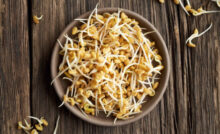6 Simple Daily Changes That Can Slash Your Cancer Risk: Transform Your Routine, Transform Your Health


Transform your health with six simple daily habits that can significantly reduce your cancer risk.
Discover how integrating six easy daily habits into your routine can significantly lower your cancer risk. From diet adjustments to sun protection, these simple changes could make a big difference in your health.
6 Little Changes in Your Everyday Routine to Reduce the Risk of Cancer
Cancer is a complex disease with numerous contributing factors, but making small adjustments to your daily routine can significantly reduce your risk. Here’s how integrating six simple yet effective changes into your lifestyle can help in cancer prevention.
1. Adopt a Balanced Diet
Eating a balanced diet is crucial for maintaining overall health and reducing cancer risk. Incorporate a variety of fruits, vegetables, whole grains, and lean proteins into your meals. These foods are rich in vitamins, minerals, antioxidants, and fiber, which play a vital role in protecting your cells from damage and supporting your immune system.
Fruits and Vegetables: Aim for at least five servings of fruits and vegetables each day. Foods like berries, leafy greens, and cruciferous vegetables (such as broccoli and cauliflower) are particularly beneficial due to their high antioxidant content, which helps neutralize free radicals that can cause cellular damage.
Whole Grains: Choose whole grains over refined grains. Foods like brown rice, quinoa, and whole-wheat products contain more fiber, which is linked to a lower risk of colorectal cancer.
Lean Proteins: Opt for lean protein sources such as chicken, fish, beans, and legumes. Red and processed meats have been associated with an increased risk of cancer, particularly colorectal cancer.
2. Engage in Regular Physical Activity
Physical activity is another key factor in reducing cancer risk. Regular exercise helps maintain a healthy weight, which is crucial because obesity is a known risk factor for several types of cancer.
Exercise Recommendations: Aim for at least 150 minutes of moderate aerobic activity or 75 minutes of vigorous activity each week, along with muscle-strengthening exercises on two or more days. Activities such as brisk walking, jogging, cycling, and swimming are excellent choices.
Benefits of Exercise: Regular physical activity can help reduce the risk of cancers such as breast, colon, and prostate. It also improves overall health by enhancing immune function, reducing inflammation, and helping to regulate hormones.
3. Limit Alcohol Consumption
Excessive alcohol consumption has been linked to an increased risk of various cancers, including breast, liver, and esophageal cancer. The risk is dose-dependent, meaning that the more alcohol you consume, the higher your risk.
Alcohol Guidelines: To reduce cancer risk, it’s advisable to limit alcohol consumption to no more than one drink per day for women and two drinks per day for men. One drink is defined as 12 ounces of beer, 5 ounces of wine, or 1.5 ounces of distilled spirits.
Healthy Alternatives: If you find it challenging to reduce alcohol intake, consider substituting with non-alcoholic beverages or water. Reducing alcohol consumption can not only lower cancer risk but also improve overall health and well-being.
4. Avoid Tobacco Products
Tobacco use is one of the leading causes of cancer, with a strong link to lung, mouth, throat, esophageal, and several other cancers. Quitting smoking and avoiding tobacco products can dramatically reduce your risk of developing cancer.
Quit Smoking: If you smoke, seek support to quit. There are various resources available, including counseling, nicotine replacement therapy, and medications that can help you stop smoking.
Avoid Exposure: Avoid exposure to secondhand smoke, which can also increase cancer risk. Ensure that your environment is smoke-free, and be cautious about environments where smoking is permitted.
5. Protect Your Skin from the Sun
Skin cancer, particularly melanoma, is a significant concern, especially for those with excessive sun exposure. Protecting your skin from harmful UV rays is essential for reducing the risk of skin cancer.
Sun Safety Measures: Use sunscreen with an SPF of at least 30, wear protective clothing, and avoid the sun during peak hours (10 a.m. to 4 p.m.). Seek shade whenever possible, and avoid tanning beds, which can increase the risk of skin cancer.
Regular Skin Checks: Perform regular skin self-exams to check for any changes or abnormalities in your skin. If you notice any suspicious moles or changes, consult a healthcare professional promptly.
6. Get Regular Screenings and Vaccinations
Regular cancer screenings can help detect cancer early, when it is most treatable. Additionally, certain vaccinations can protect against cancer-causing infections.
Screenings: Follow recommended screening guidelines based on your age, gender, and family history. Common screenings include mammograms for breast cancer, Pap smears for cervical cancer, colonoscopies for colorectal cancer, and prostate-specific antigen (PSA) tests for prostate cancer.
Vaccinations: Certain vaccines can help prevent cancer by protecting against infections that can lead to cancer. For example, the human papillomavirus (HPV) vaccine helps protect against cervical and other cancers, while the hepatitis B vaccine can reduce the risk of liver cancer.
Incorporating these six changes into your daily routine—eating a balanced diet, staying physically active, limiting alcohol, avoiding tobacco, protecting your skin from the sun, and getting regular screenings and vaccinations—can significantly reduce your risk of cancer. By making these small but impactful adjustments, you are taking proactive steps toward better health and potentially reducing your cancer risk.
Remember, while these changes can lower your risk, they do not guarantee cancer prevention. It’s essential to maintain a regular dialogue with your healthcare provider about your personal health risks and to stay informed about the latest recommendations for cancer prevention and early detection.
Recent Posts
One Sleepless Night Can Weaken Your Immunity and Trigger Inflammation
Sleep is often regarded as a luxury in today’s fast-paced world, but scientific research continuously…
Thick Heart Syndrome: A Silent Threat to Millions in India
Heart disease remains one of the leading causes of death worldwide, and in India, cardiovascular…
Delhi Sees Surge in H1N1 and Influenza B Cases
Delhi is witnessing a sharp rise in flu cases, particularly Influenza B and H1N1 (commonly…
Woman Dies During MRI Scan Due to Medical Negligence
In early February 2025, a tragic incident occurred in Eluru, Andhra Pradesh, where a 61-year-old…
Holi and Eye Safety: Protect Your Vision During Festivities
Holi, the festival of colors, is one of the most vibrant and joyous celebrations in…
FDA Recalls Popular Skincare Products Over Cancer-Causing Chemical
In a major development, the U.S. Food and Drug Administration (FDA) has issued recalls for…

